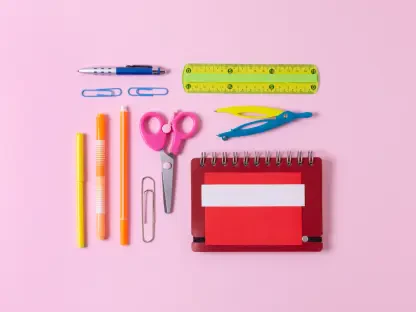In a bold move to curb distractions and enhance focus in the classroom, a school district in Iowa has rolled out a stringent policy that prohibits students from using cellphones and personal electronic devices throughout the entire school day. This sweeping ban, affecting students in grades 5 through 12, comes as a direct response to recent state legislation mandating restrictions on device use during instructional periods. Administrators have taken a firm stance by defining the scope of this rule to cover every moment from the opening bell to dismissal, including breaks like lunchtime and transitions between classes. The decision has sparked a range of reactions, from cautious optimism about improved learning environments to concerns over enforcement challenges. As this policy takes effect, it raises broader questions about balancing technology’s role in education with the need for discipline and focus in schools, setting the stage for a significant shift in daily student life.
Policy Details and Scope
The newly implemented rule in the Newton Community School District leaves no room for ambiguity, applying a blanket prohibition on cellphone use for students across middle and high school levels at both Newton High School and Berg Middle School. This comprehensive approach, backed by a state law signed earlier this year, ensures that devices remain off-limits during all school hours, regardless of whether students are in class or on a break. Superintendent Tom Messinger and other administrators have emphasized that the goal is to create a consistent standard across grade levels, eliminating any gray areas that might lead to confusion or selective compliance. The policy’s breadth reflects a commitment to minimizing distractions and fostering an environment where academic engagement takes precedence over digital interruptions. While the intent is clear, the sheer scope of the ban has prompted discussions about how such a strict measure will play out in a setting where technology is often intertwined with daily routines.
Beyond the overarching restriction, the district has put in place a structured disciplinary framework to enforce compliance with the cellphone ban. For a first violation, a student’s device is confiscated and returned at the end of the day, serving as an initial warning. A second offense escalates the consequence, requiring a parent to retrieve the device directly from the school office, adding a layer of accountability. Further infractions could result in more severe penalties, such as in-school or out-of-school suspensions, with administrators reserving the right to apply additional measures as needed. If a student refuses to hand over their device, they may be sent home for the remainder of the day, a policy point clarified by Berg Middle School Assistant Principal Jen Wiebel. This progressive system aims to deter repeated violations while ensuring fairness, though it also highlights the potential for friction between students and staff as the rule is enforced across diverse situations.
Implementation Challenges and Solutions
Enforcing a policy as extensive as this cellphone ban presents notable logistical hurdles, particularly in a district where a limited number of staff must oversee hundreds of students. With only 60 staff members managing 842 students, as noted by Newton High School Assistant Principal Laura Sherratt, monitoring compliance during non-class periods like lunch or hallway transitions proves especially daunting. Private spaces such as restrooms further complicate enforcement, creating opportunities for covert device use. Administrators anticipate a learning curve as they navigate these challenges through trial and error, acknowledging that perfect implementation may take time. The complexity of maintaining consistency in such a dynamic environment underscores the need for strategic planning and adaptability to ensure the policy does not become a source of constant conflict or frustration for either students or educators.
To address these practical difficulties, school officials are exploring innovative solutions to streamline the enforcement process and alleviate student concerns. One proposed measure includes the use of classroom cellphone boxes where devices can be stored during lessons, making compliance a routine part of the school day. Additionally, secure lock boxes in the office are under consideration for holding confiscated devices, ensuring they are kept safe until returned. Some students have expressed worries about privacy, fearing staff might access personal information on their phones, but administrators like Jen Wiebel have reassured them that such concerns are unfounded. These initiatives aim to balance strict enforcement with respect for student rights, fostering an atmosphere of trust. By integrating these tools into daily procedures, the district hopes to minimize disruptions and make the transition to a device-free school day as seamless as possible for everyone involved.
Perspectives and Potential Outcomes
The introduction of this stringent cellphone ban has elicited a spectrum of opinions among school board members, reflecting both support for its objectives and apprehension about its execution. Travis Padget, a board member, has voiced concerns about the mixed messages students might receive when electronic devices are permitted for educational purposes yet banned otherwise, potentially confusing enforcement efforts for teachers. This duality could undermine the policy’s effectiveness if not addressed with clear guidelines. Meanwhile, the broader aim of reducing distractions aligns with the district’s commitment to enhancing academic focus, a goal that many stakeholders endorse. However, the diversity of viewpoints among decision-makers highlights the complexity of implementing a rule that impacts so many facets of school life, raising questions about whether the benefits will outweigh the inevitable growing pains during the initial rollout.
Skepticism also surrounds the feasibility of policing device use during non-instructional times, as articulated by board member Donna Cook, who predicts significant student resistance and an undue burden on staff. The concern is that overly rigid enforcement could lead to covert usage, defeating the policy’s purpose while straining relationships between students and educators. Cook advocates for a structure that minimizes friction, suggesting that flexibility in certain scenarios might be necessary to maintain goodwill. Despite these reservations, administrators remain united in their belief that the ban, supported by state legislation, will ultimately improve classroom dynamics if paired with ongoing staff training and open dialogue. As conversations with faculty continue before the school year progresses, the focus remains on reinforcing the legal backing of the policy while ensuring it serves as a tool for positive change rather than a point of contention.
Reflecting on a Bold Step Forward
Looking back, the decision by the Newton Community School District to enforce a comprehensive cellphone ban marked a pivotal moment in addressing digital distractions within educational settings. The policy, driven by state mandates, sought to redefine the school day by prioritizing uninterrupted learning over constant connectivity. While the disciplinary measures and storage solutions showed a commitment to fairness and practicality, the challenges of monitoring compliance in a busy school environment tested the resolve of staff and students alike. Diverse perspectives from board members illuminated the delicate balance between intent and execution, revealing a shared hope for success tempered by realistic concerns. Moving forward, the district’s adaptability will be key—refining enforcement strategies, fostering student cooperation, and investing in staff training could transform this bold initiative into a model for others. The journey ahead offers an opportunity to evaluate what truly enhances learning, paving the way for policies that resonate with both educational goals and everyday realities.









